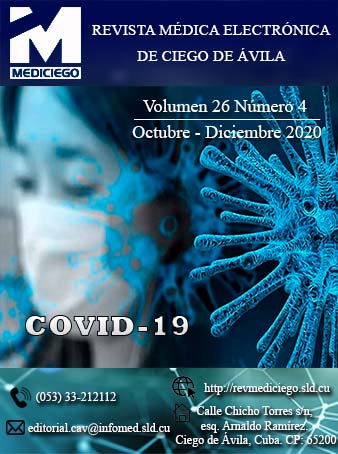Hepatocellular toxic hepatitis and inverse dissociated cholestasis due to Sinovul® overdose. Case report
Abstract
Introduction: toxic hepatitis, whether functional or histological, result from liver damage caused by different substances foreign to the body, both natural and artificial. Although they are not as common when compared to other liver diseases, their importance lies in the severity they can be.
Objective: to present the case of a patient who suffered hepatotoxicity from Sinovul®, with dissociated cholestasis, an infrequent sign in patients with this type of hepatitis.
Case presentation: 38-year-old female patient with a medical history of viral hepatitis A at age 21. A month earlier, she self-medicated with four Sinovul® tablets (levonorgestrel and ethinyl estradiol). She presented nausea, weakness, tachycardia, and an acute liver disease. She was diagnosed with hepatocellular toxic hepatitis with inverse dissociated cholestasis, for which the overdose of the drug consumed, the chronology of the symptoms and the results of the tests were taken into account. She was indicated symptomatic treatment, and after four months the disease subsided.
Conclusions: when faced with a patient with liver failure, the specialist must carry out a detailed anamnesis to establish the correct diagnosis early. The possible toxic origin of hepatitis should always be taken into account, considering the drugs that can most frequently cause it according to the age of the patients and the signs that - despite being infrequent - are associated with the disease. The importance of the physician's adherence to the clinical method for an accurate diagnosis of the condition is underlined.
Downloads
Published
How to Cite
Issue
Section
License
Those authors who have publications with this journal accept the following terms of the License CC Attribution-NonCommercial 4.0 International (CC BY-NC 4.0):
You are free to:
- Share — copy and redistribute the material in any medium or format for any purpose, even commercially.
- Adapt — remix, transform, and build upon the material for any purpose, even commercially.
The licensor cannot revoke these freedoms as long as you follow the license terms.
Under the following terms:
- Attribution — You must give appropriate credit , provide a link to the license, and indicate if changes were made . You may do so in any reasonable manner, but not in any way that suggests the licensor endorses you or your use
- No additional restrictions — You may not apply legal terms or technological measures that legally restrict others from doing anything the license permits.
The journal is not responsible for the opinions and concepts expressed in the works, which are the exclusive responsibility of the authors. The Editor, with the assistance of the Editorial Committee, reserves the right to suggest or request advisable or necessary modifications. Original scientific works are accepted for publication, as are the results of research of interest that have not been published or sent to another journal for the same purpose.
The mention of trademarks of specific equipment, instruments or materials is for identification purposes, and there is no promotional commitment in relation to them, neither by the authors nor by the editor.






















